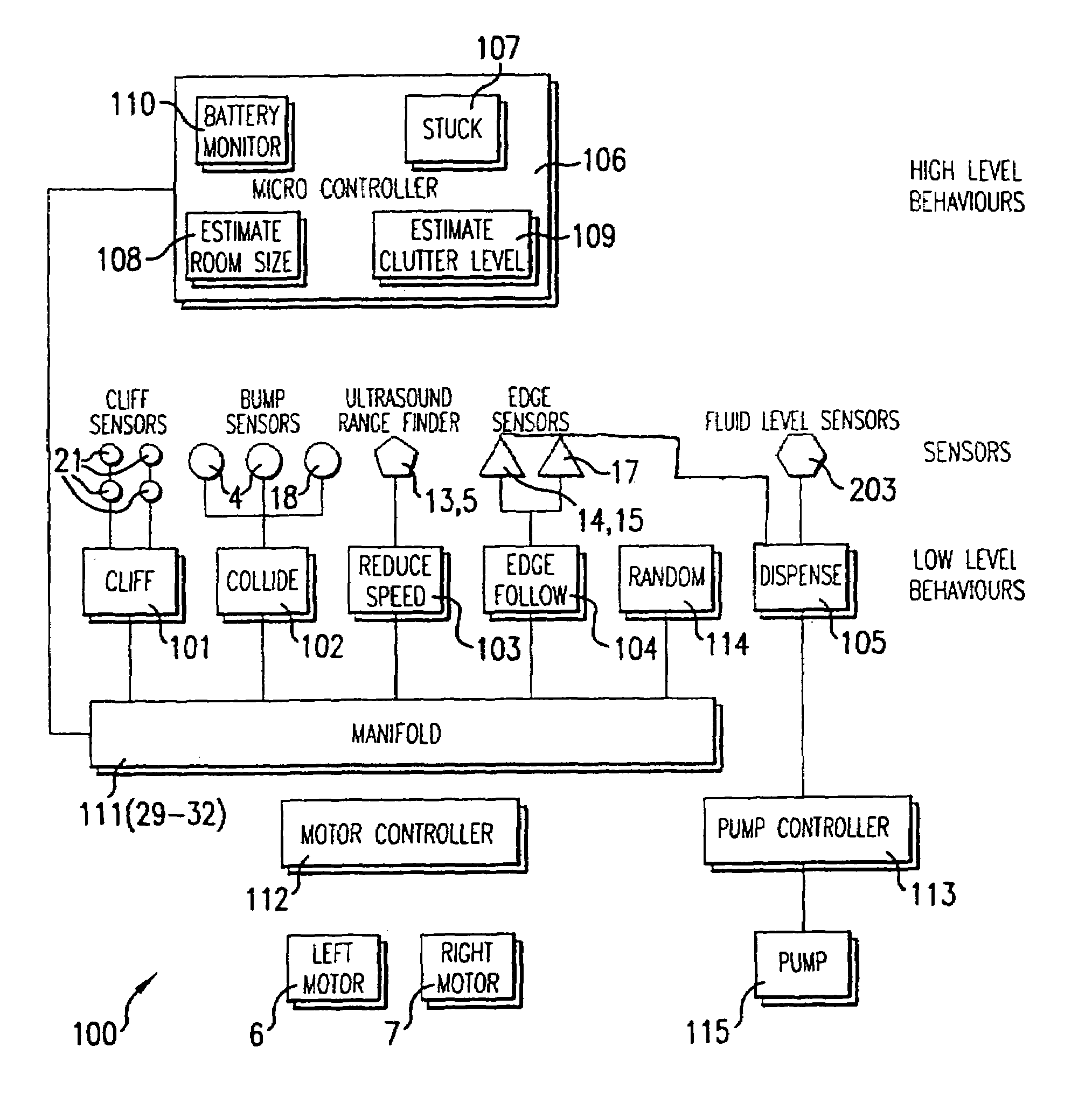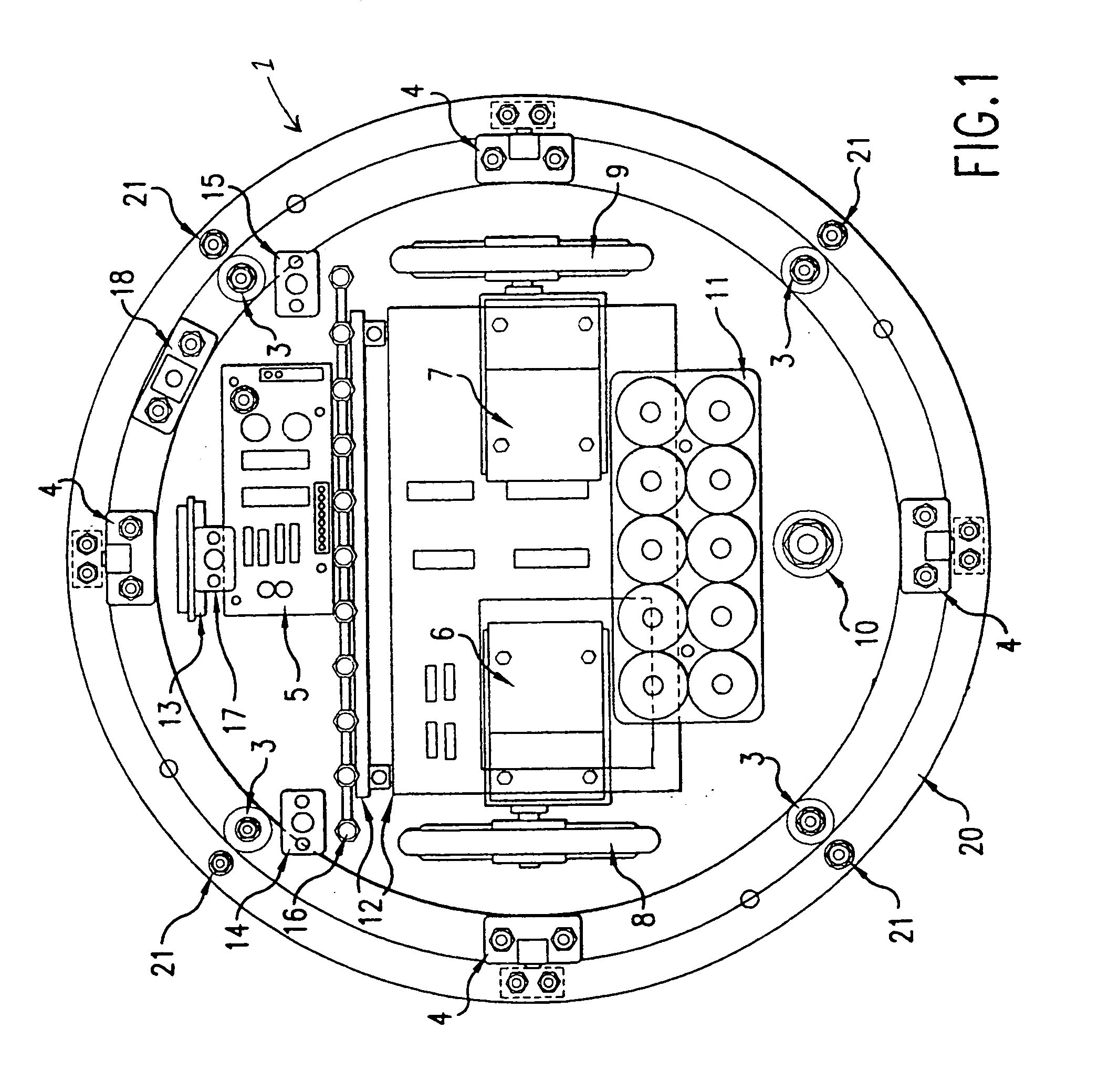Robotic system
a robot and system technology, applied in the field of robot systems, can solve the problems of damage to the surface, and inability to meet the needs of users, and achieve the effect of avoiding or minimising over-application
- Summary
- Abstract
- Description
- Claims
- Application Information
AI Technical Summary
Benefits of technology
Problems solved by technology
Method used
Image
Examples
Embodiment Construction
[0029]As can be seen from FIG. 1, the robot of the present example is substantially circular in overall plan view. A simple plate-like chassis 1 supports both the mechanical and electrical components of the robot. The plate-like chassis 1 supports the body (not shown) of the robot on resilient rubber mountings 3 which allow the body to move relative to the chassis 1 when a force is applied, e.g. by collision with an object, to a sensor ring 20 which is disposed around the periphery of the body. Four displacement sensors 4 placed at 90° intervals around the robot measure lateral displacement of the body relative to the chassis 1 and inform the control system of contact with an external object. The displacement sensors 4 are based on linear Hall Effect devices which produce a voltage which is proportional to the strength of the magnetic field in which they are immersed. Each sensor consists of a small permanent magnet mounted on the body shell support ring 20 and a Hall Effect device ...
PUM
 Login to View More
Login to View More Abstract
Description
Claims
Application Information
 Login to View More
Login to View More - R&D
- Intellectual Property
- Life Sciences
- Materials
- Tech Scout
- Unparalleled Data Quality
- Higher Quality Content
- 60% Fewer Hallucinations
Browse by: Latest US Patents, China's latest patents, Technical Efficacy Thesaurus, Application Domain, Technology Topic, Popular Technical Reports.
© 2025 PatSnap. All rights reserved.Legal|Privacy policy|Modern Slavery Act Transparency Statement|Sitemap|About US| Contact US: help@patsnap.com



